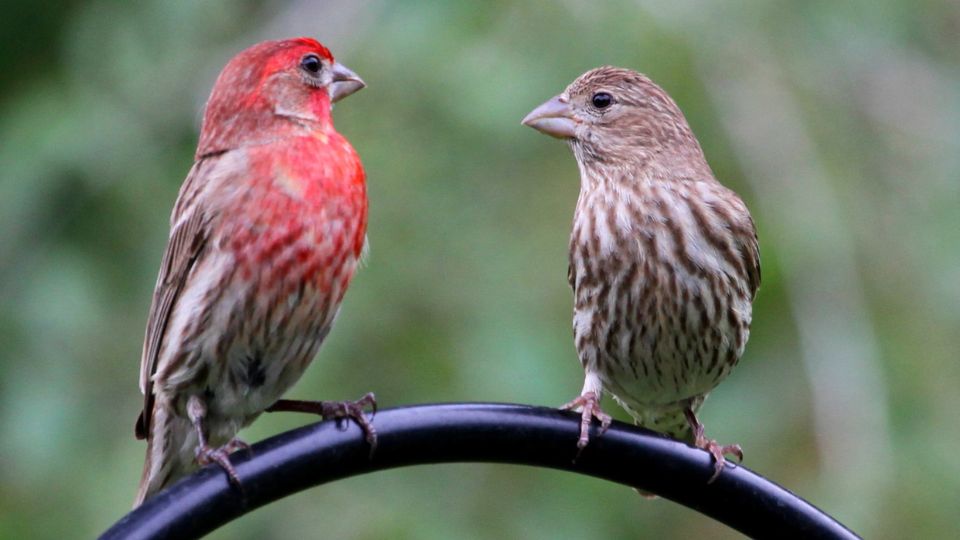House finches nest from March to July, where they can tend to up to 6 broods of offspring per season. The finch nest is comprised of natural materials such as twigs and leaves. Finch eggs are less than an inch in size, and are white or pale blue in color dotted with specks.
When Does the House Finches Breeding Season Begin?
The breeding season of House Finches starts in March and lasts into August. Female finches build their nests in the springtime, but courtship often starts in the winter.
House finches are monogamous, meaning they find a mate and mate for life. In the wintertime, the male House Finch courts the female with a “butterfly song.” The male House Finch’s butterfly song consists of flying high into the sky and then swooping down onto a branch, singing a continuous song.
If the butterfly song isn’t sufficient, the male finch will also courtship feed. Like feeding its young, the male finch will regurgitate its food into the female‘s mouth to woo her.
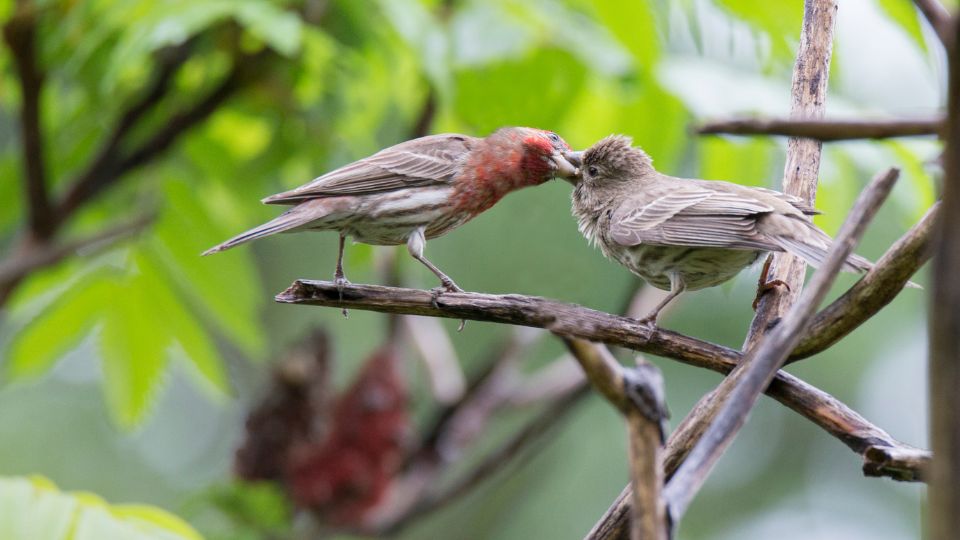
Thankfully, this practice is done by birds, not humans (yuck!). When the female House Finch selects a mate, the breeding season begins.
Where Do House Finches Build Their Nests?
House Finches are not strangers to suburban areas and build their nest just about anywhere. They prefer the higher branches of deciduous or coniferous trees but also make nests in planter boxes, street lamps, or on the edges of buildings.
House Finches are wary of predators, so finding the perfect hiding spot high off the ground is vital for the survival of their nestlings. Sometimes, House Finches even use abandoned nests for their bird eggs.
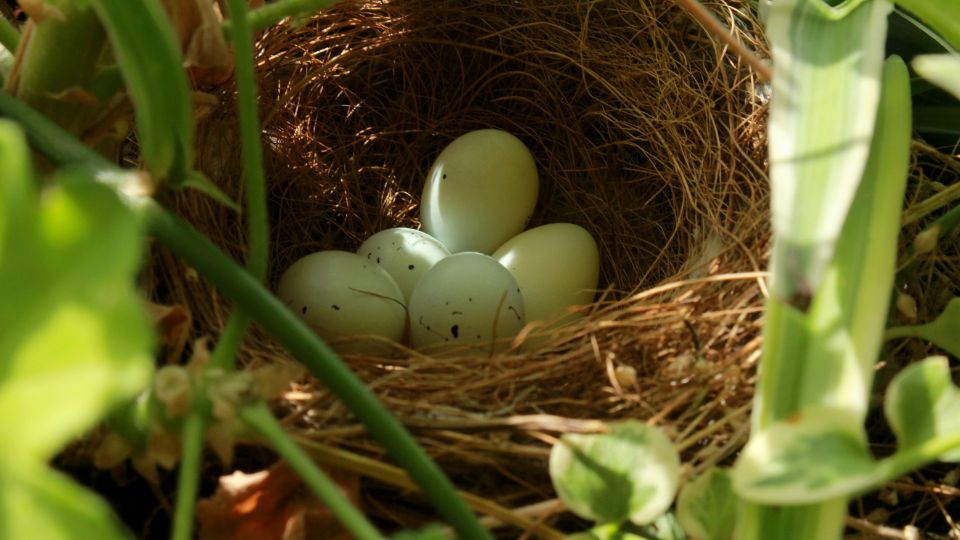
What Does a House Finch Nest Look Like?
The nest of a House Finch is a shallow cup shape to house their very small finch eggs and nestlings. The nest typically comprises of soft materials, including twigs, string, wool, feathers, and leaves.
The width of a nest measures to be only three to seven inches wide, and the inside cup is one to three inches wide and two inches deep. The male locates a good location for the nest; if the female approves of the location, she will gather materials to build the nest.
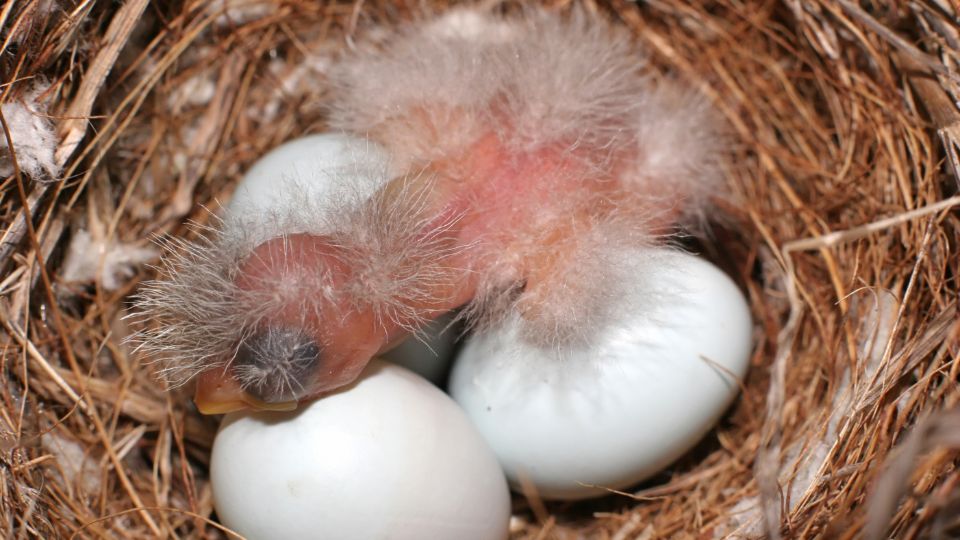
When Does the Female Finch Begin Egg Laying?
Once the location is selected and the nest is built, it’s time to lay eggs for the first time of the season. Female House Finches lay eggs early in the spring, typically in March.
The typical clutch size for house finch eggs is between two to six eggs, with four being the average. The eggs of these songbirds are very small and measure to be .6-.8 inches in diameter.
The color of these eggs ranges from bird to bird. Some House Finch eggs are white with black specks, while others may look pale blue with black and purple specks. The size and coloring of House Finch eggs are very similar to the eggs of the House Sparrow.
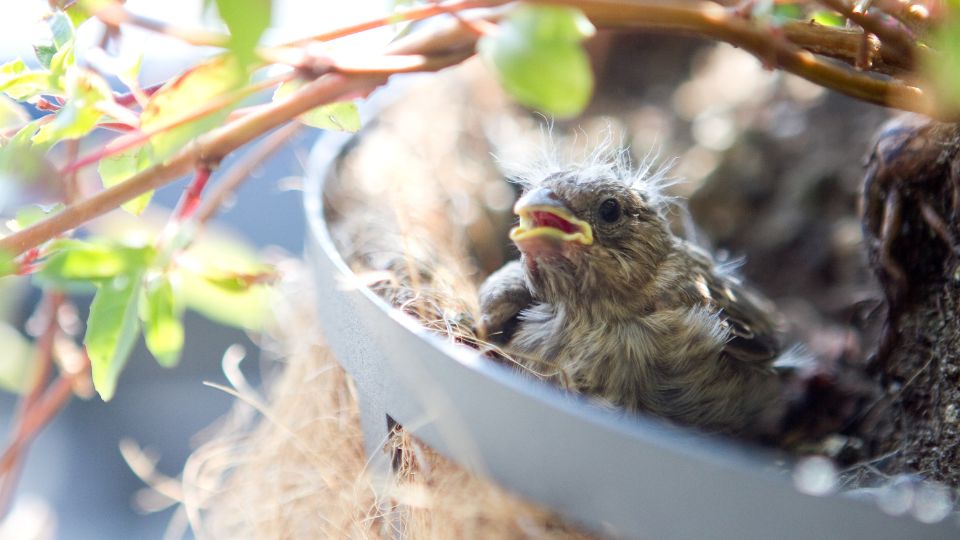
How Long Do House Finches Nest For?
A House Finch can lay up to six broods of nestlings throughout the spring and summer. However, it’s unlikely that they can reach that number in a single season.
Many House Sparrows lay between two to six broods per season, with the average being around four broods per nesting season. With courtship happening in the winter, nesting season begins in early spring.
While often rare, these songbirds sometimes even raise a batch of eggs well into August. House Finches that live in warmer climates often raise more than two broods per season, while those that live in cooler parts of North America only produce two to three.
How Long Is the Incubation Period for Finch Eggs?
After the female lays her eggs, the incubation period lasts between 13-14 days. During this period, the female sits on the eggs to keep them nice and warm.
The male House Finch forages for food and brings it back to the female. During this time, the female House Finch also protects her nest from hungry predators.
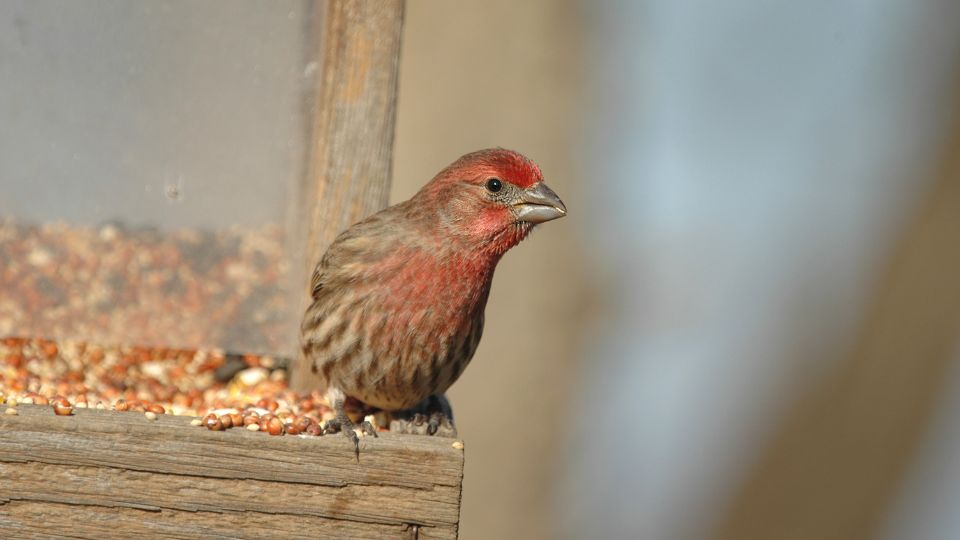
Hatching, Nestling, and Fledglings
Taking care of nestlings and fledglings can get a little gross. House Finches like to keep their nests clean, which often means eating their baby birds’ droppings.
The nestlings leave the nest after around 12-19 days. However, the male finch feeds the fledglings even after they leave the nest. The baby songbirds follow the dad to food sources, such as backyard bird feeders and millet, and wait as the male bird regurgitates food into their mouths.
When they are strong enough to forage on their own, grown birds often travel together in large flocks. While the dad feeds the young fledglings, the female House Finch is busy building a new nest for her next brood.
Buying A Finch From A breeder
Finches make excellent pets if you select one from a knowledgeable breeder. They can cost anywhere between 10 to 100 dollars, and love the company of other birds.
If you want a finch as a pet, the key is to give them plenty of companionships so that they never feel alone. So, how can you tell if a finch breeder is good at what they do? The first place to look is the state of their pet shop.
Be on the lookout for these 4 signs that a breeder is a good fit:
- Make sure that the cages are clean.
- Ensure that there is enough space for each bird and that the cages aren’t overcrowded
- Are the cages in an area with plenty of natural light?
- Make sure their food and water dishes are filled and cleaned.
If your breeder passes all of these requirements, they are a great place to pick out your new feathered household companions.
Ideal Birdhouses or Aviary Environments for House Finches
You can help these delightful backyard birds not only by supplying them with food but with safe aviary environments to live in. Nest boxes and birdhouses for House Finches are incredibly affordable and a great way to keep hatchlings safe from hungry predators.
Be sure to place your nest box high off the ground- at least five feet. Ensuring that your nest box is at least five feet off of the ground protects the baby birds from ground predators such as cats, raccoons, and squirrels. The enclosed box also helps protect them from air-born predators such as hawks and crows.

